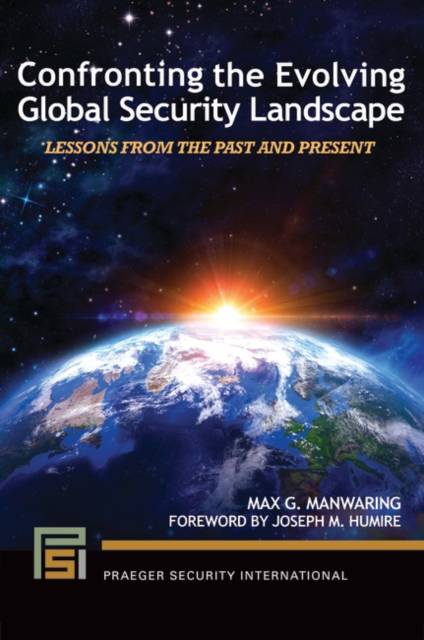
- Retrait gratuit dans votre magasin Club
- 7.000.000 titres dans notre catalogue
- Payer en toute sécurité
- Toujours un magasin près de chez vous
- Retrait gratuit dans votre magasin Club
- 7.000.0000 titres dans notre catalogue
- Payer en toute sécurité
- Toujours un magasin près de chez vous
Confronting the Evolving Global Security Landscape
Lessons from the Past and Present
Max G Manwaring
113,95 €
+ 227 points
Description
Helps civilian and military leaders, opinion makers, scholars, and interested citizens come to grips with the realities of the 21st-century global security arena by dissecting lessons from both the past and the present.
This book accomplishes four tasks: first, it outlines the evolution of the national and international security concept from the Treaty of Westphalia (1648) to the present; second, it examines the circular relationship of the elements that define contemporary security; third, it provides empirical examples to accompany the discussion of each element-security, development, governance, and sovereignty; and fourth, it argues that substantially more sophisticated stability-security concepts, policy structures, and policymaking precautions are required in order for the United States to play more effectively in the global security arena. Case studies provide the framework to join the various chapters of the book into a cohesive narrative, while the theoretical linear analytic method it employs defines its traditional approach to case studies. For each case study, it discusses the issue in context, findings and outcomes of the issue, and conclusions and implications. Issue and Context sections outline the political-historical situation and answer the "What?" question, Findings and Outcome sections answer the "Who?", "Why?", "How?", and "So What?" questions, and Conclusions and Implications sections address Key Points and Lessons.Spécifications
Parties prenantes
- Auteur(s) :
- Editeur:
Contenu
- Nombre de pages :
- 192
- Langue:
- Anglais
- Collection :
Caractéristiques
- EAN:
- 9781440867828
- Date de parution :
- 14-06-19
- Format:
- Livre relié
- Format numérique:
- Genaaid
- Dimensions :
- 160 mm x 239 mm
- Poids :
- 498 g

Les avis
Nous publions uniquement les avis qui respectent les conditions requises. Consultez nos conditions pour les avis.






